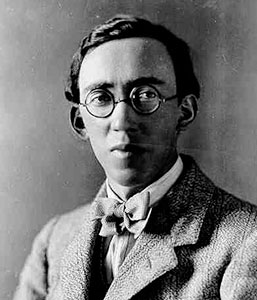Vernon March was born in Kingston upon Hull, in the East Riding of Yorkshire, the son of a seed crusher (oil miller).
His family moved to Battersea in London around 1901 where his father worked as a building clerk. Of a family of nine, eight of the March children became artists, three of whom became sculptors.
In 1911, Vernon March exhibited two of his works at the Royal Glasgow Institute of the Fine Arts Annual Exhibition. He exhibited seven times at The Exhibition of the Royal Academy of Arts, between 1907 and 1927. He was the youngest exhibitor at the Royal Academy of Arts, as he was just sixteen when his sculpture of Psyche was exhibited in 1907.
In January 1926, Vernon won a world-wide competition to design the National War Memorial of Canada in Ottawa – one of seven finalists from 127 applicants. His winning design was for a memorial arch surmounted by Liberty holding a torch and winged Victory wearing a laurel wreath, both bronze figures at the top of a granite arch. Below, a cannon is present at the rear of the monument. In front of the cannon, there are twenty-two bronze soldiers under the arch, representing the eleven branches of the Canadian military forces that existed during the First World War.
Work on the monument had not yet been completed when Vernon died of pneumonia in 1930. Six of his siblings completed the bronze statues for the monument. They moulded the figures in clay and cast them in plaster. Then, the bronzes were finished in their foundry at Goddendene. The family completed the work by July 1932. However, construction of the arch in Canada could not commence because the site in Ottawa had not yet been prepared. The bronze memorial groups were mounted on a base instead and shown at Hyde Park in London. After six months, they were then transferred to the studio in Farnborough where they remained until they were shipped to Canada in 1937.


